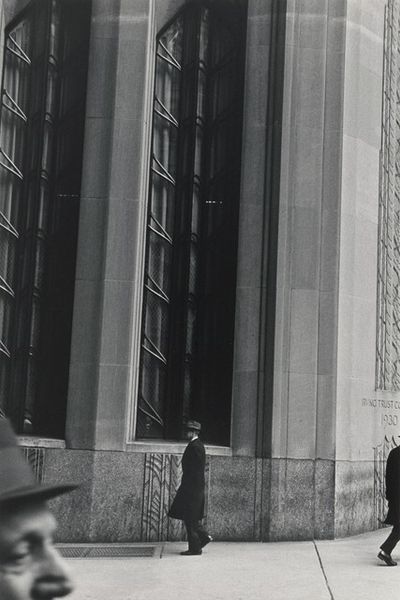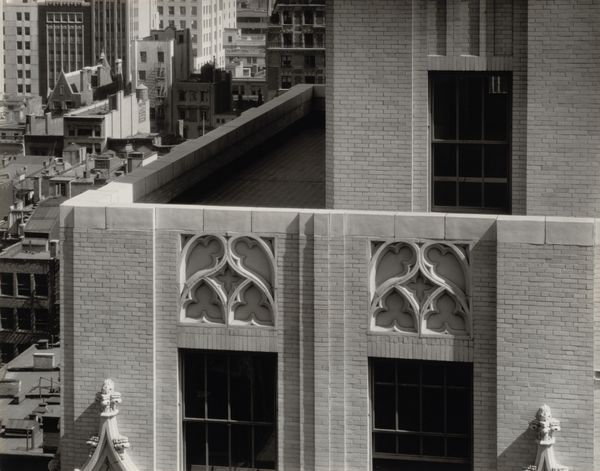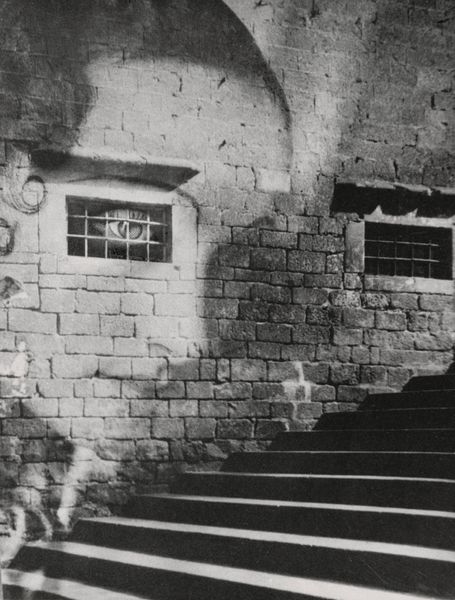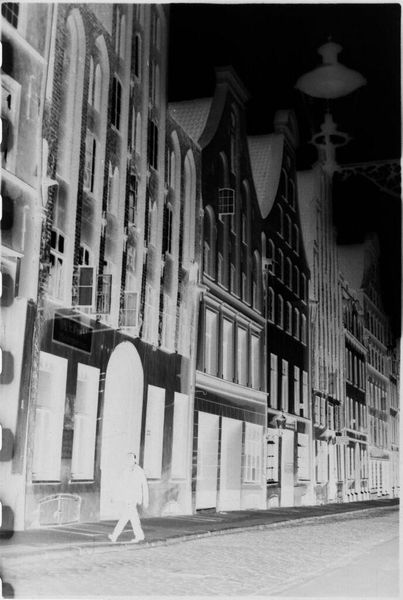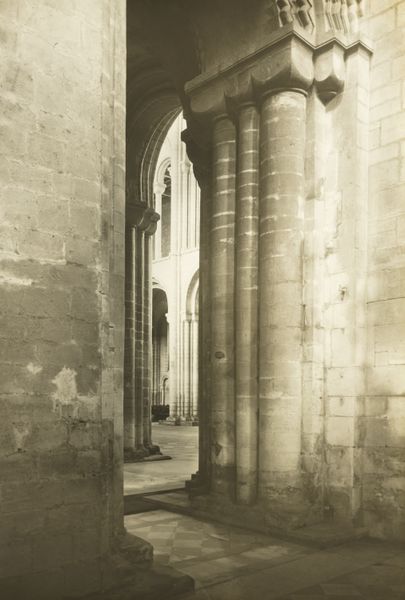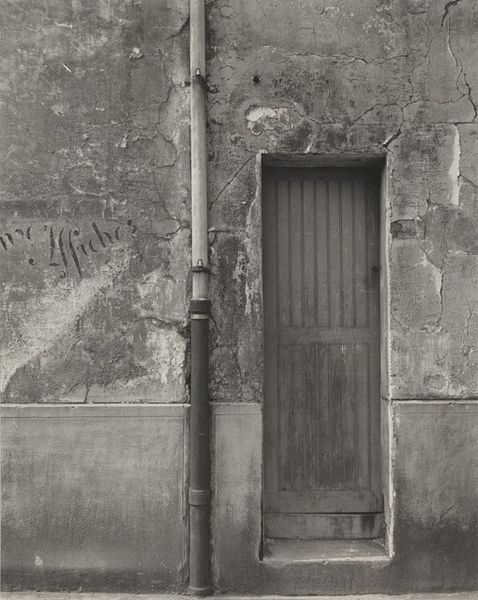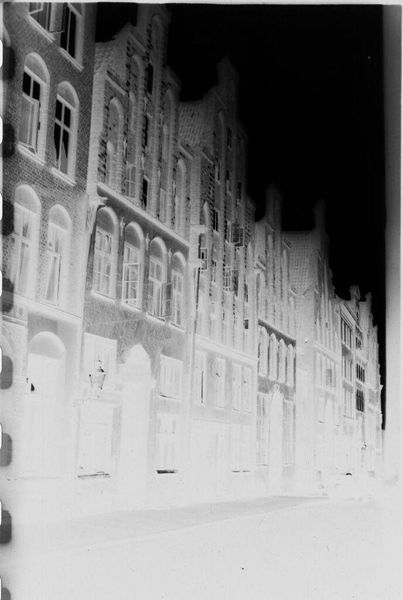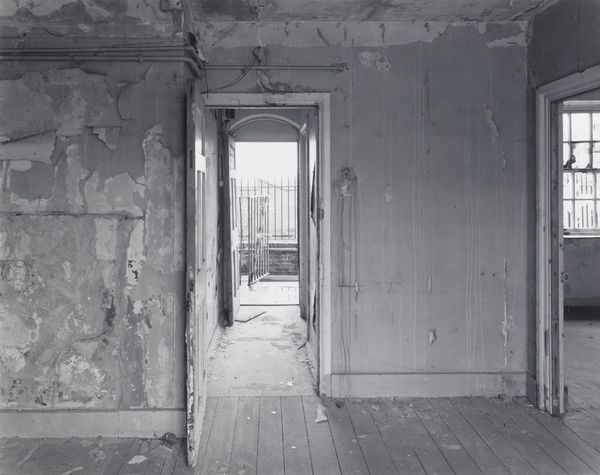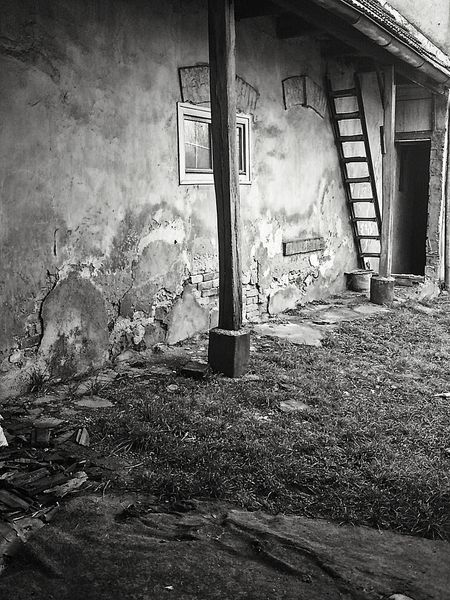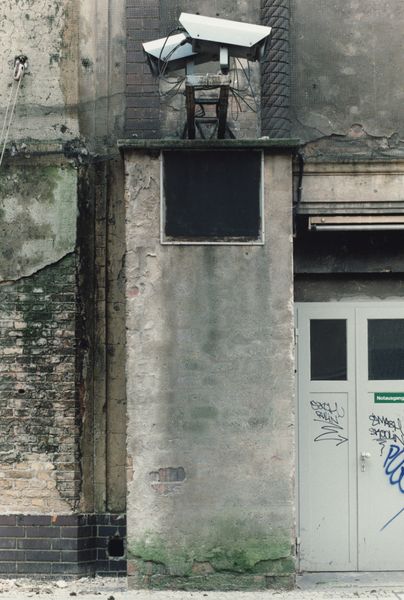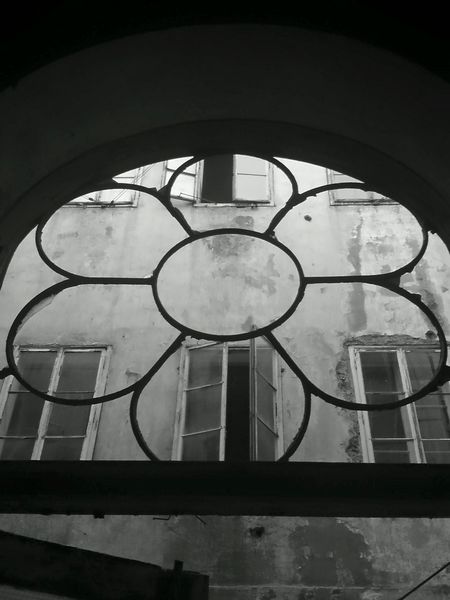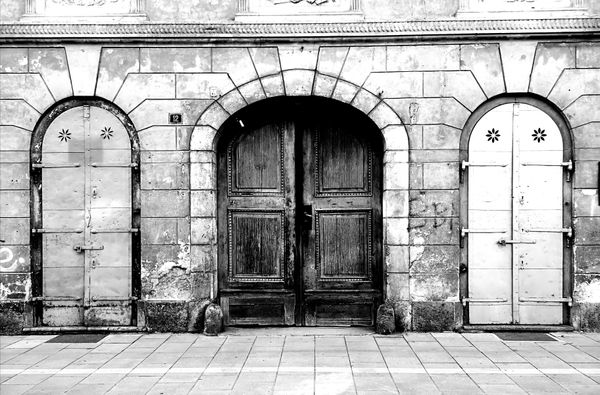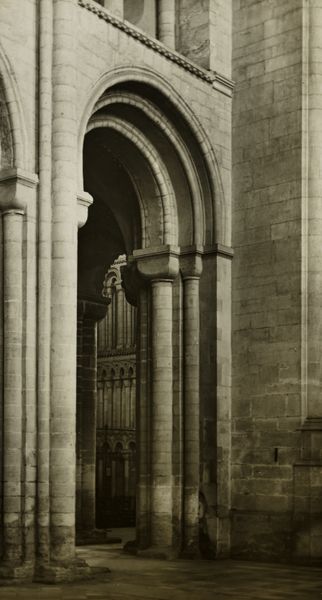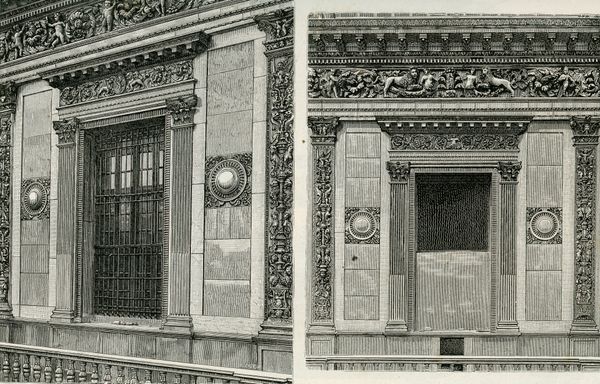
photography, architecture
#
building
#
street shot
#
asian-art
#
landscape
#
urban cityscape
#
historic architecture
#
street-photography
#
photography
#
urban life
#
cityscape
#
building photography
#
architecture
Dimensions: image: 23.6 × 16.5 cm (9 5/16 × 6 1/2 in.)
Copyright: National Gallery of Art: CC0 1.0
Editor: This photograph, "Storefront, Beijing, China" taken by Henri Cartier-Bresson in 1948, shows intricate architectural details and, peering from behind the window, the faces of two people. There's a real sense of history and also intimacy to it. What’s striking is how this close view can reveal cultural dynamics. How do you read this work? Curator: The photo offers a layered narrative, capturing not only the aesthetics of the traditional storefront with its carved wood, but also subtle glimpses into social life during a period of immense change in China. Think about 1948 – the Communist Revolution was imminent, and here we see ordinary people framed by, almost trapped within, the architecture of the old order. Editor: So, the faces aren’t just portraits? Curator: Exactly. The architecture acts as a stage, a visual framework within which to understand the subjects’ roles. It poses the question: are they representatives of the past, observers of the present, or active agents in a new future? The way the faces are pressed against the glass too suggests a certain vulnerability. Editor: I see what you mean, it’s almost like they are being presented, framed for our analysis. The architecture is integral to the scene. Do you think Cartier-Bresson deliberately staged this, or did he capture a candid moment? Curator: Cartier-Bresson's idea of the decisive moment comes to mind, he could well have waited until the moment expressed the place. We, viewers, become implicated as interpreters of a pivotal point in history and its cultural presentation. Editor: That's a completely different way of looking at street photography. It's less about a single shot and more about the unfolding narrative of a nation and those living there. Curator: Indeed. It reminds us of photography’s capacity to capture the complex relationship between individuals and their historical context, something to keep in mind next time we’re framing history ourselves.
Comments
No comments
Be the first to comment and join the conversation on the ultimate creative platform.
